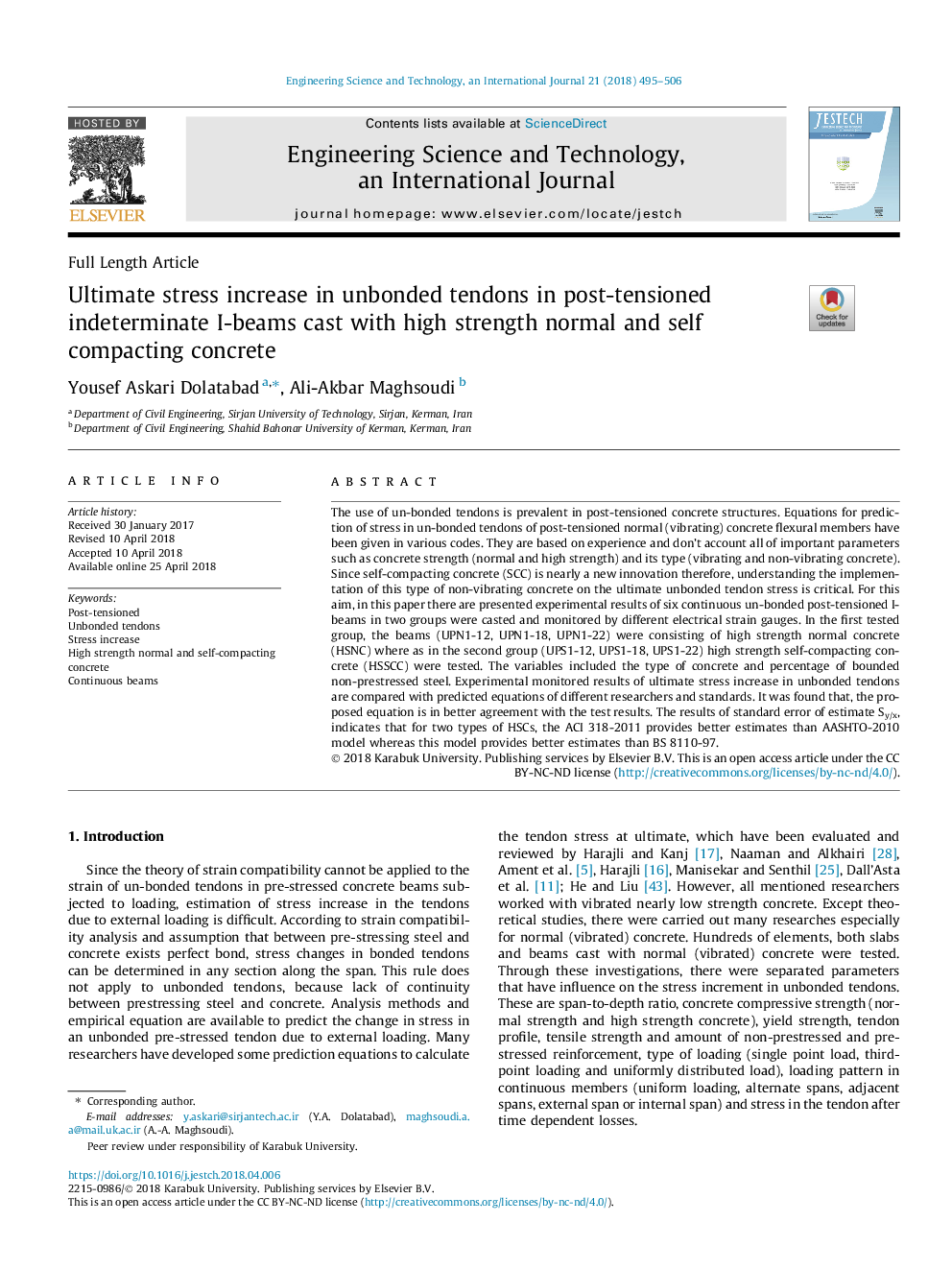| Article ID | Journal | Published Year | Pages | File Type |
|---|---|---|---|---|
| 6893648 | Engineering Science and Technology, an International Journal | 2018 | 12 Pages |
Abstract
The use of un-bonded tendons is prevalent in post-tensioned concrete structures. Equations for prediction of stress in un-bonded tendons of post-tensioned normal (vibrating) concrete flexural members have been given in various codes. They are based on experience and don't account all of important parameters such as concrete strength (normal and high strength) and its type (vibrating and non-vibrating concrete). Since self-compacting concrete (SCC) is nearly a new innovation therefore, understanding the implementation of this type of non-vibrating concrete on the ultimate unbonded tendon stress is critical. For this aim, in this paper there are presented experimental results of six continuous un-bonded post-tensioned I-beams in two groups were casted and monitored by different electrical strain gauges. In the first tested group, the beams (UPN1-12, UPN1-18, UPN1-22) were consisting of high strength normal concrete (HSNC) where as in the second group (UPS1-12, UPS1-18, UPS1-22) high strength self-compacting concrete (HSSCC) were tested. The variables included the type of concrete and percentage of bounded non-prestressed steel. Experimental monitored results of ultimate stress increase in unbonded tendons are compared with predicted equations of different researchers and standards. It was found that, the proposed equation is in better agreement with the test results. The results of standard error of estimate Sy/x, indicates that for two types of HSCs, the ACI 318-2011 provides better estimates than AASHTO-2010 model whereas this model provides better estimates than BS 8110-97.
Related Topics
Physical Sciences and Engineering
Computer Science
Computer Science (General)
Authors
Yousef Askari Dolatabad, Ali-Akbar Maghsoudi,
